
The Appalachian mixed mesophytic forests is an ecoregion of the temperate broadleaf and mixed forests biome, as defined by the World Wildlife Fund. It consists of mesophytic plants west of the Appalachian Mountains in the Southeastern United States.

The Northern Anatolian conifer and deciduous forests is a temperate coniferous forests ecoregion located in northern Anatolia, Turkey.

Hirkan National Park is a national park in Azerbaijan, in the Talysh region. It was established in an area in Lankaran Rayon and Astara Rayon administrative districts on February 9, 2004 on the basis of the former "Hirkan State Reserve" which it superseded, on a surface area of 29,760 hectares (297.6 km2). It was enlarged by presidential decree on April 23, 2008 from 29,760 hectares (297.6 km2) to 40,358 hectares (403.58 km2).

The Euxine–Colchic broadleaf forests is an ecoregion of temperate broadleaf and mixed forests along the southern shore of the Black Sea. The ecoregion extends along the thin coastal strip from the southeastern corner of Bulgaria in the west, across the northern coast of Turkey, to Georgia in the east, where it wraps around the eastern end of the Black Sea.
The Monti Simbruini are a mountain range in central Italy, a part of Apennines mountain system.

Mediterranean conifer and mixed forests is an ecoregion, in the temperate coniferous forest biome, which occupies the high mountain ranges of North Africa. The term is also a botanically recognized plant association in the African and Mediterranean literature.

The Pindus Mountains mixed forests constitute a terrestrial ecoregion of Europe according to both the WWF and Digital Map of European Ecological Regions by the European Environment Agency. It belongs to the Mediterranean forests, woodlands, and scrub biome, and is in the Palearctic realm.
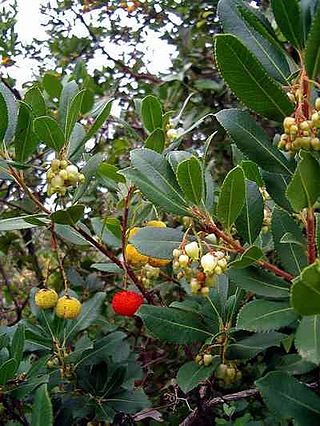
The flora of Italy is all the plant life present in the territory of the Italian Republic. The flora of Italy was traditionally estimated to comprise about 5,500 vascular plant species. However, as of 2019, 7,672 species are recorded in the second edition of the flora of Italy and in its digital archives Digital flora of Italy. In particular, 7,031 are autochthonous and 641 are non native species widely naturalized since more than three decades. Additionally, further 468 exotic species have been recorded as adventitious or naturalized in more recent times.

The Italian sclerophyllous and deciduous forests ecoregion, part of the Mediterranean forests, woodlands, and scrub biome, is in Italy. The ecoregion covers most of the Italian Peninsula and includes both evergreen and deciduous forests.

The South Apennine mixed montane forests is an ecoregion in the southern Apennine Mountains of southern Italy and Sicily. It has a Mediterranean climate, and is in the Mediterranean forests, woodlands, and scrub biome.

Central Europe contains several life zones, depending on location and elevation.
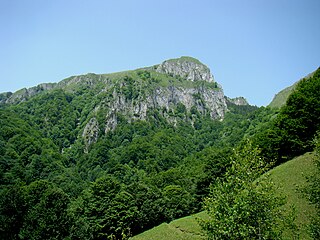
The Buila-Vânturarița National Park is a protected area situated in Romania, in the central-northern part of Vâlcea County, in the administrative territory of the localities Costești, Bărbătești, and Băile Olănești.

The Mount Ilgaz National Park is a protected area established on June 2, 1976 and located on the Ilgaz Mountains at the borderline between Kastamonu Province and Çankırı Province in the western Black Sea Region of Turkey. Natural resources and its potential for recreational activities are the main values of the national park, which stretches over an area of 742.38 ha.

The Eastern Anatolian deciduous forests ecoregion is located in the mountains of eastern Turkey. It is a Palearctic ecoregion in the temperate broadleaf and mixed forests biome.
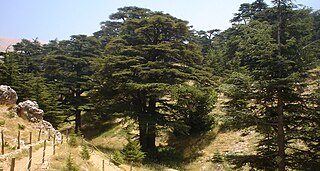
The Southern Anatolian montane conifer and deciduous forests ecoregion, in the Mediterranean forests, woodlands, and scrub biome, is in the eastern Mediterranean Basin.

The Anatolian conifer and deciduous mixed forests is an ecoregion located in southwestern Anatolia, Turkey. It has a Mediterranean climate, and is part of the Mediterranean forests, woodlands, and scrub biome.

The Carpathian montane conifer forests, also known as Carpathian montane forests, is a temperate coniferous forests ecoregion in the Carpathian Mountains of the Czech Republic, Poland, Slovakia, Romania, and Ukraine.
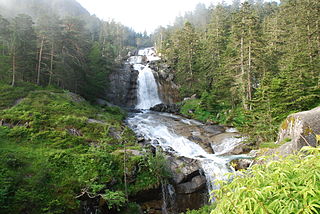
The Pyrenees conifer and mixed forests is a temperate broadleaf and mixed forests ecoregion in southwestern Europe. It extends along the Pyrenees mountains which run east and west along the border between France and Spain, and includes all Andorra. The ecoregion extends from the lower slopes of the Pyrenees to its highest peaks, which include Aneto, Posets, and Vignemale.

The Alps conifer and mixed forests is a temperate broadleaf and mixed forests ecoregion in central Europe. It extends along the Alps mountains through portions of France, Italy, Switzerland, Germany, Liechtenstein, Austria, and Slovenia. The ecoregion extends from the lower slopes of the Alps to its peaks, which include Mont Blanc, at 4,809 m (15,778 ft) the highest peak in the Alps.
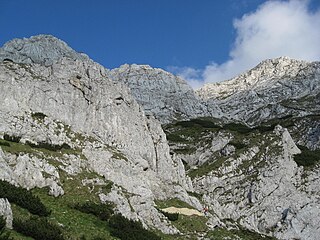
Piatra Craiului National Park is a protected area of national interest in Romania corresponding to IUCN category II, located on the territories of Argeș and Brașov counties. Located on the Piatra Craiului Massif, it is largely karstic.




















